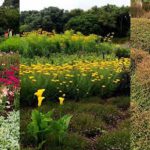Shade gardens thrive if well planned
As the heat sets in it is the shady spots around your home that host us for the family braai or quiet spot to which we escape. Gardening in the shade is a challenge for many and especially new gardeners who need some guidance. Problems in shade gardens are normally due to the lack of light, water or food. A shade garden is possible, there are some tricks for growing great shade gardens that are important if you are determined to succeed. Our team have some ideas around creating the perfect spot for you.
Water wise Philodendrons love shade
Several characteristics typify shade gardening. In addition to low light levels, plants growing in the shade must compete with shading trees for nutrients and water and tolerate poor air circulation. Shade cast by buildings is characterised by moist conditions and plant selection here also plays an important role. Shade from overhanging trees is called dry shade due to the trees competing for water.
The first active step is to ensure your plants have adequate water and this means that you do have to provide them with enough water to grow and flower. Often most water is absorbed by the trees providing the shade and less is available to the smaller plants. Remember that those trees have very greedy roots and will outcompete perennials in your garden just as they do in nature. Regular mulching and liberal composting will help to loosen the soil and help retain moisture.

Secondly large trees also take most of the available nutrients in the soil, creating tough competition for shade shrubs and ground covers. Feeding regularly is a must at least three of four times through summer.
Lastly lighten up on decor. Choose light-colour rocks or pavers for paths and use pale statuary. Darker objects disappear in the low light of a shade garden.
Our favourite plants for shade:
Azaleas
The most popular flowering shade plants are the acid loving Rhododendrons also known as evergreen azaleas. Rhododendrons also make excellent container plants or in the garden as part of a border. Rhododendrons create a picture in the early spring when they are smothered in blooms. They are available in a wide range of colours. The best position for your Rhododendron is towards the edge of a bed where the shade is not as deep. Plant them with Acid Compost and feed with Colourburst Azalea food to keep them looking great.
Last word on design
Shade gardens are often more subtle and restful than sunny ones. Plant textures and colour differences become more important elements of the design. Strong contrasts in texture accentuate their differences. Use strong textural contrasts only where emphasis is needed. Upright, columnar plant shapes are used as accent points in the shade. Rounded or spreading forms create a more spacious and opulent effect. To emphasise plantings in the shade, concentrate on plants with light flowers or foliage which will stand out more.



